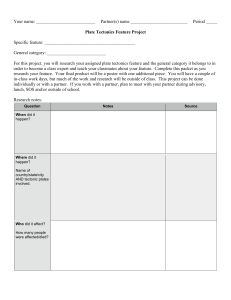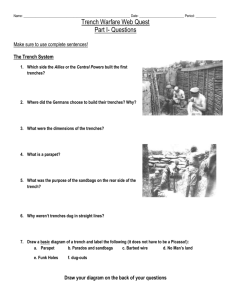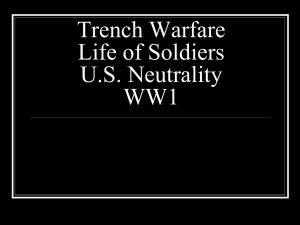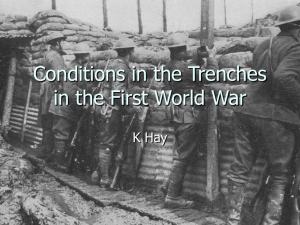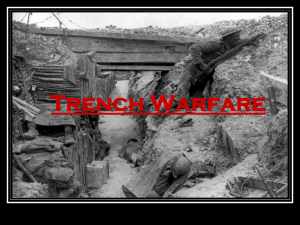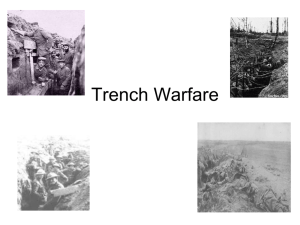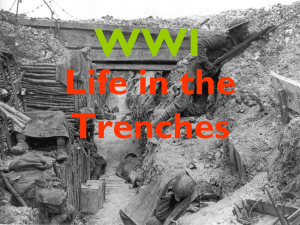File
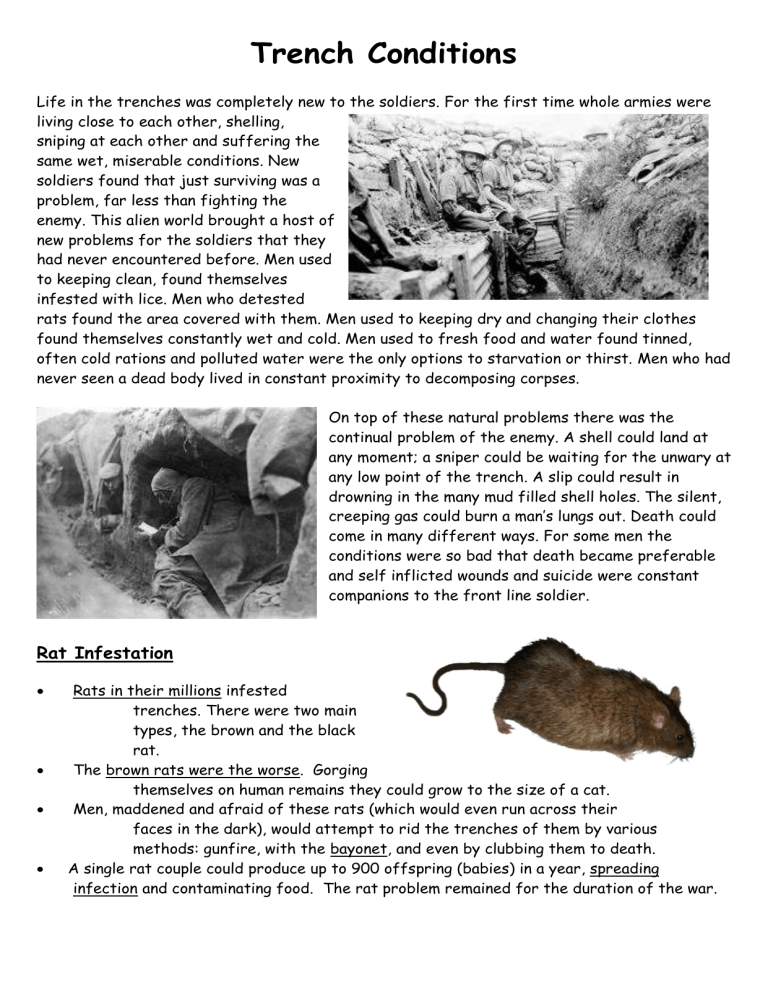
Trench Conditions
Life in the trenches was completely new to the soldiers. For the first time whole armies were living close to each other, shelling, sniping at each other and suffering the same wet, miserable conditions. New soldiers found that just surviving was a problem, far less than fighting the enemy. This alien world brought a host of new problems for the soldiers that they had never encountered before. Men used to keeping clean, found themselves infested with lice. Men who detested rats found the area covered with them. Men used to keeping dry and changing their clothes found themselves constantly wet and cold. Men used to fresh food and water found tinned, often cold rations and polluted water were the only options to starvation or thirst. Men who had never seen a dead body lived in constant proximity to decomposing corpses.
On top of these natural problems there was the continual problem of the enemy. A shell could land at any moment; a sniper could be waiting for the unwary at any low point of the trench. A slip could result in drowning in the many mud filled shell holes. The silent, creeping gas could burn a man’s lungs out. Death could come in many different ways. For some men the conditions were so bad that death became preferable and self inflicted wounds and suicide were constant companions to the front line soldier.
Rat Infestation
Rats in their millions infested trenches. There were two main types, the brown and the black rat.
The brown rats were the worse. Gorging themselves on human remains they could grow to the size of a cat.
Men, maddened and afraid of these rats (which would even run across their faces in the dark), would attempt to rid the trenches of them by various methods: gunfire, with the bayonet, and even by clubbing them to death.
A single rat couple could produce up to 900 offspring (babies) in a year, spreading infection and contaminating food. The rat problem remained for the duration of the war.
Lice infestation
Lice were so common because men in the front-line rarely, if ever, washed. It was not unusual for men to go over a month without washing. Lice spread due to this, breeding in the seams of filthy clothing and causing men to itch constantly.
One soldier counted 163 on himself!
Even when clothing was washed and deloused, lice eggs remained hidden in the seams; within a few hours of the clothes being re-worn the body heat generated would cause the eggs to hatch.
Lice caused Trench Fever, a particularly painful disease that began suddenly with severe pain followed by high fever. Recovery - away from the trenches - took up to twelve weeks. Lice were not actually identified as the cause of Trench Fever until
1918 (after the war).
Trench Foot
Many soldiers fighting in WW1 suffered from trench foot. This was an infection of the feet caused by cold, wet and unhygienic conditions.
In the trenches men stood for hours on end in waterlogged trenches without being able to remove wet socks or boots.
The feet would gradually go numb and the skin would turn red or blue. If untreated, trench foot could turn gangrenous and result in amputation.
The only remedy for trench foot was for the soldiers to dry their feet and change their
socks several times a day. By the end of 1915
British soldiers in the trenches had to have three pairs of socks with them and were under orders to change their socks at least twice a day. As well as drying their feet, soldiers were told to cover their feet with grease made from whaleoil.
Food
It is not surprising that food in the trenches was poor. The main food was tinned bully beef with bread or biscuits.
A popular meal was manochie – tinned
Irish stew which could be heated easily.
This was of poor quality and eating the same thing every day added to the often dull nature of trench life
There was little drinking water so soldiers drank rum instead.
The water was treated with chloride to kill the germs so had an unpleasant taste.
Boredom and camaraderie
• Once the soldiers had completed the daily trench chores of refilling the sandbags, repairing the duckboards and trench floor, and draining the trenches, many of them became bored.
• They couldn’t really move around or do much as the fear of a sniper’s bullet was always there.
• To relieve the boredom, they used to write letters home and diaries.
Camaraderie
Many soldiers enlisted with their friends. That meant that they were often in the same ‘PALS’ battalion as them and fought alongside them in the trenches.
They would spend hours together and became close. To pass the time they would sing, talk about home, and write letters. They would try to help and protect each other
These conditions made a permanent impression on all the men who lived in them and many wrote of their experiences, painted them spoke of them or took photographs and have left us a record of what it was like to live in these times.
Mud
Source A
I called up my HQ staff and told them we were making for the gun pits. Then I ran across the road and dived into a welter of mud and water
Immediately there came the crackle of bullets and mud was splattered about me as I ran, crawled and dived into shell holes, over bodies, sometimes up to my armpits in water, sometimes crawling on my face along a ridge of slimy mud around some crater …. Exhausted by my efforts,
I paused a moment in a shell hole; in a few seconds I felt myself sinking, and struggle as I might
I was sucked down until I was firmly gripped round the waist and still being dragged in. The leg of a corpse was sticking out of the side and frantically I grabbed it; it wrenched off and casting it down I pulled in a couple of rifles and yelled to the troops in the gun pit to throw me more. Laying them flat I wriggled over them and dropped, half dead, into the wrecked gun position.
Waterlogged Trenches
Source B A letter from J.B. Priestly to his father in 1915
The communication trenches are simply canals, up to the waist in some parts, the rest up to the knees. Three men were killed this week from falling dug outs. I haven’t had a wash since we came into these trenches and we are all mud from head to foot.
Trench Foot
Source C Sergeant Harry Roberts said after the war
Your feet swell to two or three times their normal size and go completely dead. You could stick a bayonet into them and not feel a thing. If you are fortunate enough not to lose your feet and the swelling goes down, it is then the intolerable, indescribable agony begins. I have heard men cry and even scream with the pain and many have had to have their feet amputated.
Source D Captain G.H. Impey, 7 th Battalion, Royal Sussex Regiment wrote about trench life
The trenches were wet and cold and at this time some of them did not have duckboards and dug outs. The battalion lived in mud and water. Altogether about 200 men were evacuated for trench feet and rheumatism. Gum boots were provided for the troops in the most exposed conditions. Trench foot was still a new ailment and the provision of dry socks was vitally important. Part of the trench was reserved for the men to go two at a time, at least once a day, and rub each other’s feet with grease.
Rats
Source E is from Stuart Dolden in 1920
The outstanding feature of the trenches was the extraordinary number of rats. The area was infested with them. It was impossible to keep them out of the dugouts. They grew fat on the food they pilfered from us and anything they could pick up in and around the trenches; they were bloated and loathsome to look at. Some were nearly as big as cats. We were filled with an instinctive hatred of them, because however one tried to put the thought out of one’s mind, one could not help feeling that they fed on the dead. We waged endless war on them and indeed they were very easy prey because owing to their nauseating plumpness they were slow of foot……. One night a rat ran across my face. Unfortunately my mouth happened to be open and the hind legs of the filthy little beast went right in.
Source F George Coppard, With a Machine Gun to Cambrai, (1969)
Rats bred by the tens of thousands and lived on the fat of the land. When we were sleeping in funk holes the things ran over us, played about, copulated and fouled our scraps of food, their young squeaking incessantly. There was no proper system of waste disposal in trench life. Empty tins of all kinds were flung away over the top of both sides of the trench. Millions of tons were thus available for all the rats in France and Belgium in hundreds of miles of trenches. During brief moments of quiet at night, one could hear a continuous rattle of tins moving against each other. The rats were turning them over. What happened to the rats under heavy shell fire was
a mystery, but their power of survival kept place with each new weapon, including poison gas.
Body Lice
Source G George Coppard wrote afterwards
A full day’s rest allowed us to clean up a bit, and to launch a full scale attack on lice. I sat in a quiet corner of a barn for two hours delousing myself as best as I could. We were all at it, for none of us escaped their vile attentions. The things lie in the seams of trousers and in the deep furrows of long thick woolly pants and seemed impregnable in their deep entrenchments. A lighted candle applied at where they were thickest made them pop like Chinese crackers. After a session of this, my face would be covered by small spots from extra big fellows which had popped too vigorously. Lice hunting was called ‘chatting’. In parcels from home it was usual to receive a tin of supposedly death dealing powder or pomade, but the lice thrived on the stuff.
Source H Private Stuart Dolden wrote about his experiences in the trenches after the war
We had to sleep fully dressed, of course, this was very uncomfortable with the pressure of ammunition on one’s chest restricting breathing; furthermore, when a little warmth was obtained the vermin used to get busy, and for some unexplained reason they always seemed to get lively in the portion of one’s back that lay underneath the belt and was always the most inaccessible spot. The only way to obtain relief was to get out of the dugout, put a rifle barrel between the belt and rub it up and down like a donkey at a gatepost. This stopped it for a bit, but as soon as one got back into the dugout, and was getting reasonably warm so would the little brutes get going again
.
Rations
Source I Edwin Campion Vaughan Some Desperate Glory: Diary of a Young Officer, 1917
I called Hammond and set off to the YMCA to lay in stores for heaven knew when we would next strike a canteen. Ewing was very fond of a new type of lemon squash called Kia-Ora and
when we had bought stacks of salmon, fruit biscuits, better, prawns and other tinned stuff, plus much whisky, I thought how nice and kind it would be to buy a case, convey it secretly and enjoy his delight when it was produced at the other end. So we added on to the pile which the servants were coming to collect.
Source J Malcolm Brown Tommy goes to war
Ration parties from each company in the line went to carry back the rations which were tied in sandbags and consisted usually of bread, hard biscuits, tinned meat in 12oz tins, tinned jam, tinned butter, sugar and tea, pork and beans, cigarettes and tobacco.
Sometimes we got ‘MacConnachie Rations’. This was a sort of Irish stew in tins which could be quickly heated over a charcoal brazier …..
When it was possible to have a cookhouse within easy reach of trenches fresh meat, bacon, vegetables, flour, etc. would be sent up and the cooks could produce reasonably good meals and food and tea was sent along the trenches in ‘dixies’
In winter there was a ration of rum, one or two tablespoons per man; this was a strong, black spirit which was usually issued during the morning ‘stand to’; it was very welcome on a cold winter’s morning……
Water was sent up in petrol cans. We were not supposed to use untreated water so each battalion had water carts and the medical officer was responsible for insuring it was chlorinated before use.
The effect of one shell
Source K Malcolm Brown Tommy goes to War
Imagine a bright May morning and a platoon (about 55 men) busily engaged in washing, cleaning up, cooking and some sleeping. Suddenly a tremendous explosion, a deathly stillness as if all were paralyzed, then fearful screams and groans and death gasps. What had happened? A high explosive German shell had fallen into a wide part of the trench where many men had been. The sight of the wounded shedding their blood from gaping wounds and agonized cries – one asking to be shot – would have convinced any humane man that war is an impossible way of settling national questions …. This single high explosive shell killed 7 and wounded 18 – yet the day before 400 shells came over and dropped immediately behind this trench within 10 yards and no one was hurt – but this one shell bursting right in the trench accounted for a total of 25 men.
The trench after the dead and wounded were removed presented a ghastly sight – it was red with blood like a room papered in crimson.
